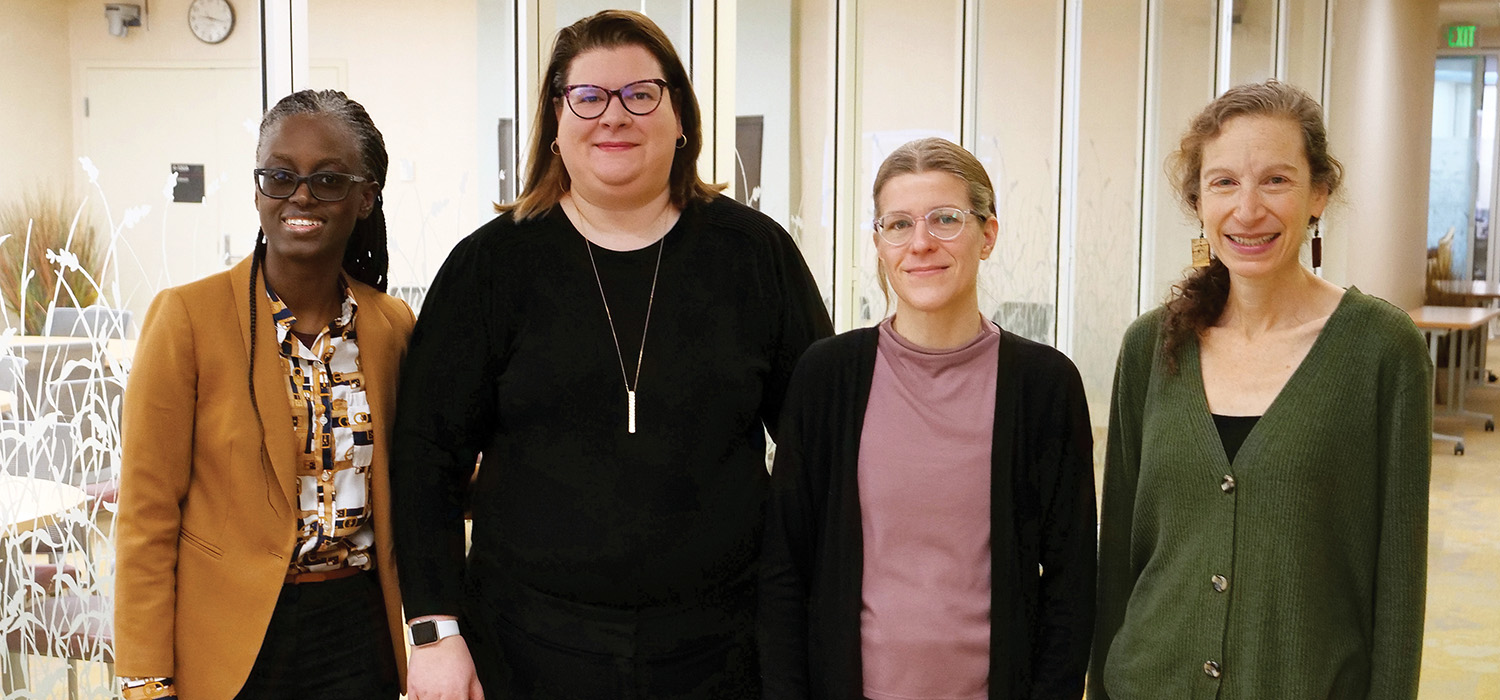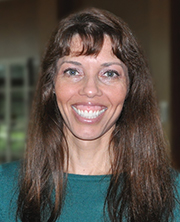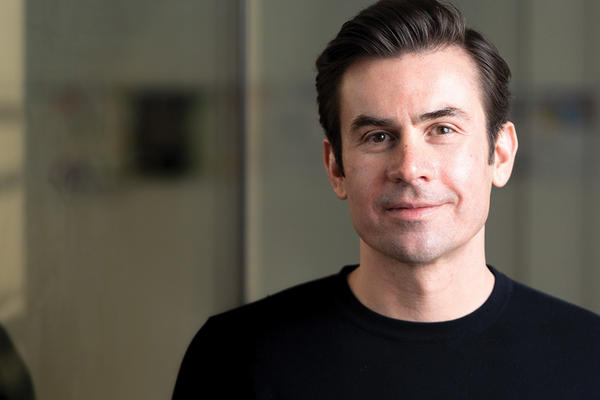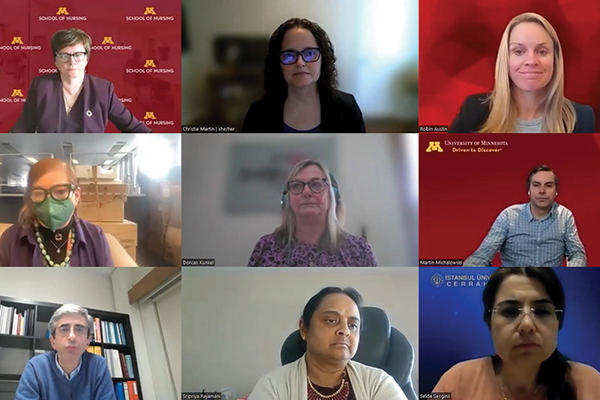Addressing suicide risk among ethno-racially minoritized youth
HRSA grant supports research to identify risk, protective factors
May 3, 2023
Brett Stursa

Above: Eunice Areba, Michelle Mathiason Moore, Patricia Jewett and Iris Borowsky.
When a New York University-led team published findings in 2019 indicating suicide attempts increased 73% among Black adolescents — and increased faster than any other group — it was unexpected to many as Black youth have historically not been considered at high risk for suicide or suicidal behaviors.
With current data suggesting otherwise, researchers from the University of Minnesota are seeking to understand risk and protective factors associated with repetitive non-suicidal self-injury, suicidal ideation and suicidal behaviors among adolescents, with a focus on ethno-racially minoritized youth.
Clinical Assistant Professor Eunice Areba, PhD, RN, PHN, is leading an interprofessional team of researchers that was awarded funding from the Health Resources and Services Administration (HRSA) for their project, Centering the Margins: Addressing Suicide Risks among Ethno-Racial Minority Adolescents.
“The findings from the 2019 study are concerning, so we are trying to find out why,” says Areba. “Our long-term goal is to identify the role of family, school and community factors on risk for suicidal behaviors to develop interventions and foster environments that may reduce suicidal thoughts and behaviors.”
Identifying risk, protective factors
Their project involves analyzing cross-sectional data and links several state level datasets to identify student-reported family, school and community risk and protective factors associated with repetitive non-suicidal self-injury, suicidal ideation and suicidal behaviors. They also will examine differences across ethno-racial groups, such as Black/African American, American Indian/Alaska Native, Hispanic/Latino, Middle Eastern and North African, as well as more granular ethnic groups such as Somali and Hmong. The analysis will focus on students aged 15-19 years. The project will also identify school policies and resources associated with repetitive non-suicidal self-injury, suicidal ideation and suicidal behaviors. It will examine shifts in these factors pre- and post- the COVID-19 pandemic.
“We already know there was a huge increase in kids reporting to ERs with self-harm behaviors, especially at the peak of the pandemic. So we wouldn’t be surprised to see that reflected in the data, especially among girls,” says Areba. She suspects that the data may show different experiences for minoritized youth.
“Even before the pandemic, we had huge issues in terms of access to mental health specialists and resources,” says Areba. “There are cultural considerations that are often not accounted for by health care providers when providing care to minoritized youth. So even before we factored in COVID, we’ve seen differences across those groups.”
Who is conducting the research matters
Areba says it matters who is conducting the research, noting that the NYU-led research team in the 2019 study had Black representation. “It is extremely important who is guiding the research process,” says Areba. “Because the way I am asking the questions and looking at the data is very different from someone who does not have the lived experience I have as a Black woman.”
In addition to Areba, the project team includes Michelle Mathiason, MS, Patricia Jewett, PhD, Lindsay Taliaferro, PhD, MPH, and Iris Borowsky, MD, PhD.

“The team really exemplifies team science,” says Areba. “People are trained differently. We have training in public health, psychology, nursing, medicine (pediatrics and adolescent health), epidemiology and statistics. When we all work together, you can really see each of our areas of expertise and how they complement each other.”
The team not only has a diversity of training, but also a diversity of backgrounds.
“We have diversity in racial and ethnic identity, nativity, and experience and rank in the academy, geography, and lived experience, which has been very helpful with this project,” says Areba. “Those backgrounds are very important in how you prepare and construct the data for analysis, how you present and discuss the findings, and how you contextualize them.”
Developing better screening, surveillance tools
Areba expects to continue this research by seeking input from young people and community members about protecting adolescent mental health and preventing self-harm to develop broad-scale interventions to reduce suicidal behaviors using upstream approaches.
Ultimately, she expects to make recommendations around screening in primary care settings. “Preliminary data show that current surveillance is working better in identifying non-Hispanic white girls, but not as much for other youth,” says Areba. “We need to answer why the current tools are missing these kids, and what we need to do to have better screening and surveillance tools and resources to help us with this work.”


